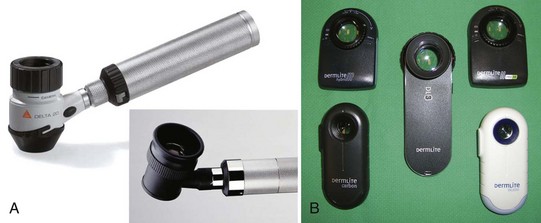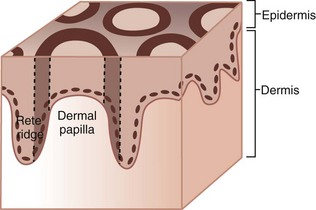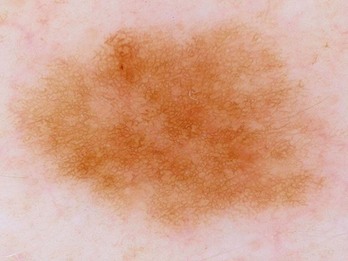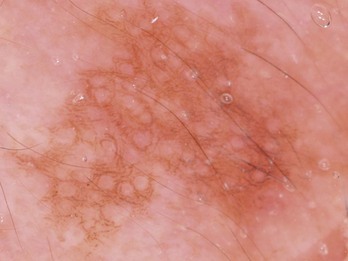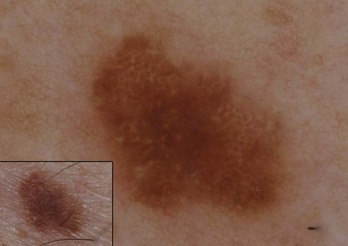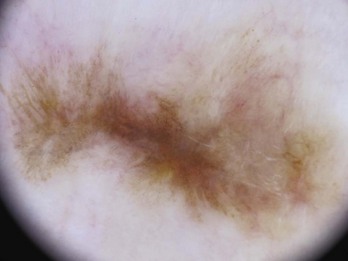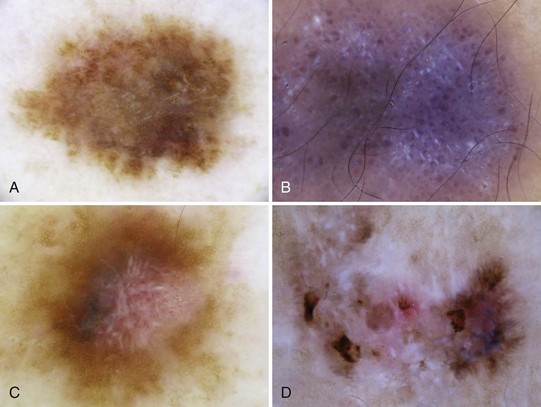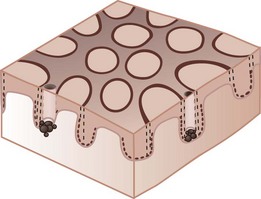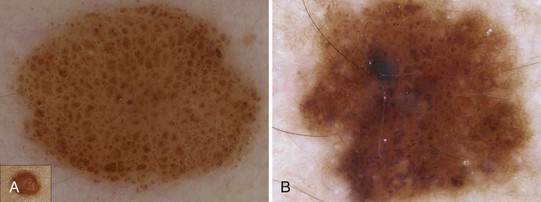32 Dermoscopy
Advantages of and Evidence for Dermoscopy
In two separate meta-analyses, dermoscopy had significantly higher discriminating power than clinical examination for experienced users.1–3 It is intuitively obvious that this improved diagnostic accuracy translates into improved patient management. For example, in one study, the malignant-to-benign ratio improved in dermoscopy users from 1 : 18 to 1 : 4.4
Primary care physicians (PCPs) who were given a 1-day training course in skin cancer detection and dermoscopic evaluation were able to improve their sensitivity for melanoma diagnosis. The study randomly assigned PCPs to the dermoscopy evaluation arm or the naked-eye (no dermoscopy) evaluation arm. The study showed that 23 malignant skin tumors were missed by PCPs performing naked-eye observation, whereas only 6 were missed by PCPs using dermoscopy (P = 0.002). The authors concluded that the use of dermoscopy improves the ability of PCPs to triage lesions suggestive of skin cancer without increasing the number of unnecessary expert consultations.5
Dermoscopy can help in the following ways:
Equipment
Dermoscopes illuminate the skin via the use of light emitting diode (LED) lights with or without the use of polarizing filters. Although most units are either nonpolarized (no polarizing filters in place) or polarized (polarized filters used), a few newer units, known as hybrids, allow the operator to toggle between polarized and nonpolarized light within the same unit. Nonpolarized dermoscopes (NPDs) are manufactured by Heine and Welch Allyn (Figure 32-1A). 3Gen manufactures NPDs, polarized dermoscopes (PDs), and hybrid dermoscopes (Figure 32-1B). A number of new dermoscopes attach to smart phones for easy dermoscopic photography.
Nonpolarized dermoscopy works best for visualizing:
Polarized dermoscopy works best for visualizing:
Principles of Dermoscopy
The colors seen on dermoscopy, which are based on the depth of the melanin and other skin structures, are illustrated in Figure 32-2.

Figure 32-2 Colors seen on dermoscopy based on the depth of the melanin and other skin structures.
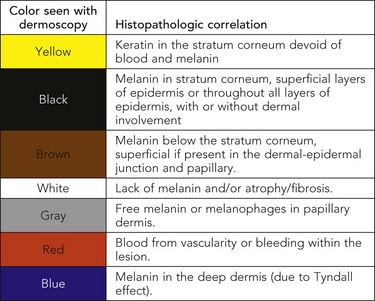
(Courtesy of Alfred W. Kopf, MD.)
Network Patterns
Pigment Network
A reticulated pigment network (Figure 32-3) has the following characteristics:
A typical pigment network in a benign nevus consists of (Figure 32-4):
For an atypical pigment network (Figure 32-5),

Figure 32-5 Atypical pigment network in a dysplastic nevus with variations in line thickness, darkness, and pattern.
(Copyright Richard P. Usatine, MD.)
A pseudonetwork (Figure 32-6) is
A negative network is a reverse network that is seen in melanoma (Figures 32-7 and 32-8). It consists of dark, elongated, and curved globular structures surrounded by relative hypopigmentation. This results in the impression that the lines of the network appear lighter in color with an almost serpiginous pattern with holes that are darker in color (and appear sausage shaped).
Other Structures
Structureless Areas
Dots
Typical dots in benign melanocytic lesions are seen in Figure 32-11. Brown dots on the network appear in normal nevi (Figure 32-12). Brown dots off the network may appear in dysplastic nevi or melanoma (Figure 32-13).
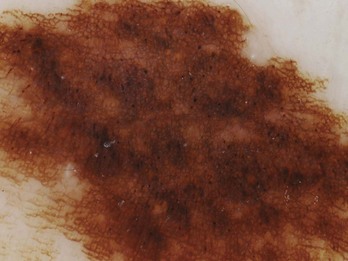
Figure 32-12 Dermoscopy of benign nevus with typical dots on the network.
(Copyright Ashfaq A. Marghoob, MD.)
Globules
Figure 32-14A shows typical globules evenly distributed in a benign nevus; Figure 32-14B shows atypical globules aggregated in the lower left corner of a dysplastic nevus.
